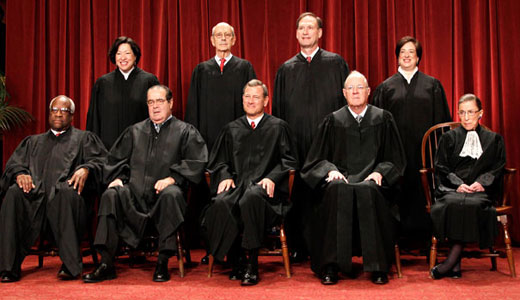
WASHINGTON (PAI) – The Wall Street Journal editorial board – the bible of business and a mouthpiece of the Right – recently suggested the decline in union membership over the last 30 years is due to lack of employee interest, but ignored the impact of aggressively anti-labor “right-to-work” laws and a string of pro-business U.S. Supreme Court decisions.
The WSJ claimed the overall decrease in union membership indicates the irrelevance of unionism in the modern workplace. From the September 16 editorial:
“The promise of joining a union has always been it will deliver better pay, benefits and job security. That proposition long ago stopped being true for most workers, and now even the AFL-CIO is tacitly admitting its loss of relevance in the private American workplace. At last week’s annual convention in Los Angeles, labor delegates voted to expand AFL-CIO membership, inviting even non-union members to join their flagging consortium…
“As dues-paying membership declines, the AFL-CIO is essentially trying to attract the equivalent of donations from the larger public. Send in whatever “dues” payments the AFL-CIO requires for membership, and in return you get — what exactly? At least if you donate during one of those PBS pledge drives, you get a tote bag and maybe a CD of Yanni at the Acropolis. It isn’t clear what non-union members will get for their cash, other than the pleasure of knowing they’ve helped AFL-CIO chief Rich Trumka stay in a better class of hotel. Will he throw in a T-shirt?”
(Editor’s note: The Journal editorial board can’t even get its facts right. The AFL-CIO convention occurs only every four years. As for better pay and benefits for union members, ask the Bureau of Labor Statistics about that.)
What the WSJ neglects to mention is a series of anti-union and pro-business Supreme Court decisions over the last 20 years that drastically reduced union organizers’ ability to communicate directly with workers, provided extra protection to employers who try to aggressively prevent unionization, and obstructed access to justice for victims of labor law abuses.
These decisions have eroded unions’ ability to engage in meaningful communication with potential members, protect themselves from illegal labor practices, and have generally contributed to the reduction in membership numbers.
Later this year, the court will hear arguments in two cases that could potentially “put a dagger in organized labor” should Chief Justice John Roberts and the five-man GOP-named conservative majority continue its pro-business streak.
The first, NLRB vs. Noel Canning, deals with President Barack Obama’s authority to fill open positions on the National Labor Relations Board, the government agency that oversees union elections and hears cases involving unfair labor practices, while the Senate is in recess. Obama filled the vacancies during a Senate break after “Republicans…engaged in an unprecedented level of obstruction of his nominations.”
The second case, Mulhall v. Unite Here Local 355, questions the constitutionality of “organizing agreements,” to let unions and employers they bargain with establish rules prior to start of contract negotiations. The agreements typically require employers to remain neutral during union organizing drives.
The Atlantic described such negotiated employer neutrality as “probably the most successful union organizing strategy of the last decade.” The organizing agreements, challenged in a case from the South, now face extinction if the Supreme Court agrees with the plaintiffs that such arrangements provide “things of value” to unions in violation of the law.
The WSJ avoids a discussion of the blow these cases could deliver to union membership, choosing instead to insist that modern employees simply aren’t interested in joining.
The Journal editorial board also suggested union dues are wasted, ignoring that a wave of aggressively anti-labor legislation caused a severe financial strain on unions. Union membership has been significantly and negatively impacted by state-level “right-to-work” legislation and other laws, notably those killing collective bargaining rights.
Since 1947, anti-labor groups managed to pass “right-to-work” laws in 23 states – an Indiana court tossed out RTW law #24, there, last month — which allow workers to refuse to pay union dues even if they work in a unionized workplace and enjoy all the benefits of unionization. The Journal‘s ridiculous PBS analogy fails. Nonmembers in unionized workplaces pay nothing and in return they get compulsory union representation at the bargaining table, not to mention free legal representation in the event of unfair labor practices or other workplace abuses.
Ultimately, the WSJ seems to be content in its decision to paint unions as workplace nuisances, even if it means ignoring the facts and the ramifications of the historically anti-labor Roberts court.
Jess Levin is senior director of communications and external affairs for Media Matters in America, a web-based, not-for-profit, progressive research and information center that monitors, analyses and corrects conservative misinformation in the media.
Photo: Supreme Court Justices. AP










